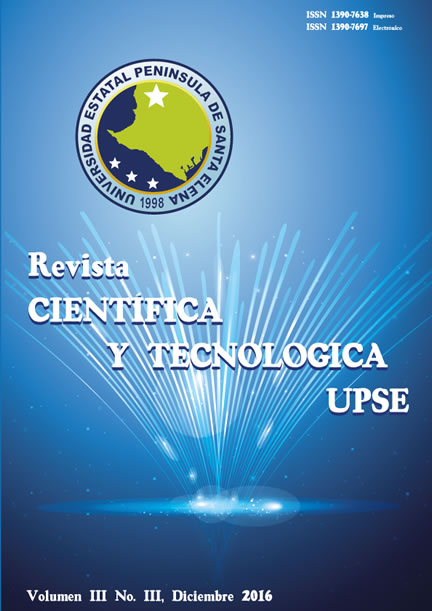Study of glass dust obtained from the grinding of recycled bottles in the Province of Santa Elena, as a partial substitute for cement in concrete
DOI:
https://doi.org/10.26423/rctu.v3i3.195Keywords:
glass, recycling, cement, concreteAbstract
The present study consists in reusing glass bottle wastes by crushing and grounding them into a fineness that allows the partial substitute of cement in the concrete. This is because when glass has been finely grounded to a micron size, it acts as a high reactivity pozzolana. Cement is the main component for producing concrete; it is also the one that causes the highest impact to the environment because the clinker production requires high energy consumption. There are studies to diminish the energy consumption, such as the substitution of fossil fuel for high calorific power residues, or by diminishing or substituting cement in construction without affecting its quality, and improving its mechanical properties. That is obtained by using materials such as flying ashes, blast furnace slags or silica fume, and the use of recycled materials, among others. The use of recycled material in concrete supposes a double benefit: on the one hand wastes are diminished and, on the other hand, the mechanical properties of concrete can be improved. That said, glass is a material that due to its physical and chemical properties, is an ideal candidate for recycling it in high percentage.
Downloads
References
Informe estadístico de la Federación Interamericana del Cemento FICEM.
http://www.inecyc.org.ec/ estadísticas consumo de hormigón Ecuador
http://www.telegrafo.com.ec/economia/item/ecuador-produjo-mas-de-1-400-millones-de-botellas-plasticas-en-2013.html toneladas de residuos.
http://www.ambiente.gob.ec/la-gestion-de-los-residuos-solidos-en-los-municipios-un-proyecto-prioritario-para-el-gobierno-nacional/ producción per cápita basura.
http://es.theglobaleconomy.com/Ecuador/Carbon_dioxide_emissions_per_capita/ producción per cápita de CO2
Estudio de impacto ambiental de Santa Elena-Guayas, producción per cápita de basura
Federación Interamericana del cemento –FICEM. Capítulo V-VI informe estadístico del año 2013
http://datos.bancomundial.org/indicador/EN.ATM.CO2E.PC/countries/EC-XJ-XT?display=default CO2 PERCAPITA ECUADOR
La captación y el almacenamiento de dióxido de carbono. GrupoIntergubernamental de Expertos sobre el Cambio Climático.
Kandru Ashok, M. l. Kumar, M. K. M. V Ratnam and Dr. U Ranga Raju (2016). A Study on Mechanical Properties and Durability Studies of Concrete using Rice Husk Ash as a Partial Replacement of Cement using Sulphuric Acid. International Journal for Innovative Research in Science & Technology, 3(6), 47-50.
Y. S. S. Parvathi, Mr. M. K. M. V. Ratnam and Dr. U. Ranga Raju (2016). A Study on Strength of Concrete by Partial Replacement of Cement with Fly Ash (F) and Adding Admixture as Coconut Fibers. International Journal for Innovative Research in Science & Technology, 3(6), 58-71.
Jostin, Ssuganya, Banu (2014). Use Of Glass Powder As Fine Aggregate In High Strength Concrete. International Journal of Science and Engineering Research (IJ0SER),Vol 2 Issue 7july-2014.
Downloads
Published
Issue
Section
License
El titular de los derechos de autor de la obra, otorga derechos de uso a los lectores mediante la licencia Creative Commons Atribución-NoComercial-CompartirIgual 4.0 Internacional. Esto permite el acceso gratuito inmediato a la obra y permite a cualquier usuario leer, descargar, copiar, distribuir, imprimir, buscar o vincular a los textos completos de los artículos, rastrearlos para su indexación, pasarlos como datos al software o usarlos para cualquier otro propósito legal.
Cuando la obra es aprobada y aceptada para su publicación, los autores conservan los derechos de autor sin restricciones, cediendo únicamente los derechos de reproducción, distribución para su explotación en formato de papel, así como en cualquier otro soporte magnético, óptico y digital.












